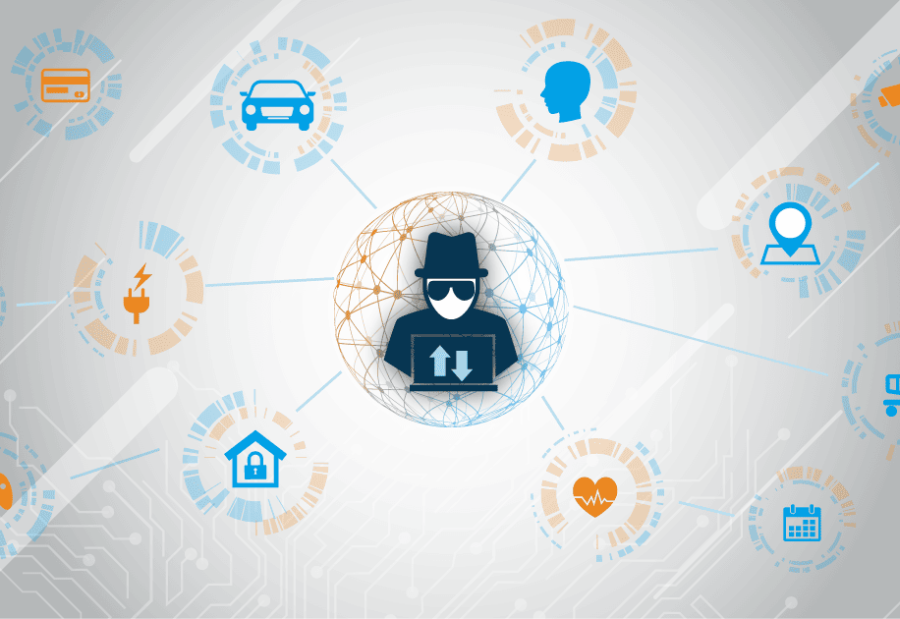The Internet of Things (IoT) has remodelled the way we interact with technology, making everyday devices smarter, more efficient, and interconnected. From smart homes to healthcare systems, IoT devices bring along incredible benefits by automating tasks and improving data-driven decision-making.
However, as the IoT ecosystem continues to expand, so do the security risks associated with it. With countless devices constantly exchanging data, IoT security challenges have become a critical concern for individuals, businesses, and governments alike.
Today, we’ll walk through the major challenges IoT devices face and offer insights on how organizations and individuals can protect their devices and data from potential threats.
So, let’s get started!
Lack of Standardized Security Protocols
Unlike traditional IT systems, IoT devices often lack common standards, leaving them open to attack.
Why it matters: Without a consistent framework, manufacturers apply different security measures, which leads to varying levels of protection across devices.
Solution: Advocating for and implementing standardized protocols industry-wide can help create a more unified defense system for IoT networks.
Weak Authentication and Password Protection
Many IoT devices come with weak or default passwords, which makes them easy targets for cybercriminals.
Why it matters: If a device is compromised, hackers can gain unauthorized access to private data or other connected devices.
Solution: Implementing strong authentication methods, such as multi-factor authentication (MFA), and enforcing regular password updates, can significantly strengthen security.
Insecure Communication Channels
IoT devices often transmit data over unsecured networks, increasing the risk of interception.
Why it matters: Hackers can eavesdrop on device communication, steal sensitive information, or inject harmful code.
Solution: Using encryption technologies like SSL/TLS can secure data transmission, ensuring that only authorized devices communicate with each other.
Lack of Software Updates and Patch Management
Many IoT devices don’t receive timely software updates or security patches, leaving them vulnerable to known exploits.
Why it matters: Cybercriminals target unpatched vulnerabilities to gain access to IoT devices and networks.
Solution: Manufacturers must ensure automatic updates are implemented, and users should be encouraged to regularly patch their devices to address security gaps.
Data Privacy Issues
IoT devices collect vast amounts of personal data, including location, health information, and behavior patterns.
Why it matters: If this data is not properly protected, it can be stolen, misused, or sold to third parties, violating privacy laws and regulations.
Solution: IoT devices should employ robust data encryption, and companies should establish clear policies about data collection, storage, and sharing.
Insufficient Device Security by Manufacturers
Often, manufacturers prioritize functionality and speed-to-market over robust security features in their IoT devices.
Why it matters: Insecure devices can be exploited, with attackers leveraging vulnerabilities in one device to infiltrate the entire network.
Solution: Manufacturers should integrate security into the design phase, conducting regular security assessments and tests to ensure products are secure.
Botnet Attacks and DDoS Vulnerabilities
IoT devices can be hijacked and used as part of a botnet to launch Distributed Denial of Service (DDoS) attacks.
Why it matters: DDoS attacks can overwhelm targeted systems, causing downtime, loss of revenue, and reputational damage.
Solution: By using secure authentication methods, keeping devices updated, and monitoring traffic, businesses can help protect against hijacking attempts.
Insecure Cloud Storage
Many IoT devices rely on cloud storage, but if the cloud infrastructure is insecure, it opens the door for hackers to access sensitive data.
Why it matters: A data breach in the cloud could expose confidential information that was thought to be secure.
Solution: Ensure that cloud providers offer strong security measures, such as encryption, access control, and regular audits, to protect IoT data.
Limited Device Lifespan and Support
Some IoT devices have a limited lifespan and may no longer be supported by manufacturers, leaving them outdated and vulnerable.
Why it matters: Once a device is no longer supported, it won’t receive crucial security updates, making it a prime target for exploitation.
Solution: Consumers should choose devices from reputable manufacturers who provide long-term support, and businesses should carefully consider a device’s lifecycle before adopting it.
IoT Ecosystem Complexity
IoT ecosystems often involve a wide range of interconnected devices, from sensors to cloud platforms, making it challenging to maintain a consistent security strategy.
Why it matters: A vulnerability in one device can compromise the entire network of connected systems.
Solution: Adopting a layered security approach (also known as defense in depth), including network segmentation, device monitoring, and anomaly detection, can help protect the entire IoT ecosystem.
How to Mitigate IoT Security Risks!
- Establish a Robust Security Strategy
Both businesses and individuals must adopt a comprehensive security approach that includes device authentication, encryption, and network monitoring.
- Security by Design
Manufacturers should build security into the design phase of IoT devices to ensure robust defenses from the outset.
- Ongoing Monitoring and Threat Detection
Continuous monitoring of IoT devices and networks is essential for identifying and responding to suspicious activity in real time.
- User Education and Awareness
Educating users on IoT risks and best practices (like changing default passwords and enabling encryption) can help reduce human error.
- Collaborative Efforts Across Industries
Governments, manufacturers, and security organizations should collaborate to create common standards, share threat intelligence, and enhance overall IoT security.
CONCLUSION
While IoT technology offers numerous benefits, its rapid growth has also introduced significant challenges. From weak authentication to data privacy concerns, the risks IoT devices face is varied and complex.
So, by merely understanding these challenges and implementing proactive security measures, both consumers and businesses can protect their devices and networks.
By prioritizing IoT security today, we can ensure a safer, more reliable future for the Internet of Things!
Also read: Viksit Workforce for a Viksit Bharat
Do Follow: The Mainstream formerly known as CIO News LinkedIn Account | The Mainstream formerly known as CIO News Facebook | The Mainstream formerly known as CIO News Youtube | The Mainstream formerly known as CIO News Twitter
About us:
The Mainstream formerly known as CIO News is a premier platform dedicated to delivering latest news, updates, and insights from the tech industry. With its strong foundation of intellectual property and thought leadership, the platform is well-positioned to stay ahead of the curve and lead conversations about how technology shapes our world. From its early days as CIO News to its rebranding as The Mainstream on November 28, 2024, it has been expanding its global reach, targeting key markets in the Middle East & Africa, ASEAN, the USA, and the UK. The Mainstream is a vision to put technology at the center of every conversation, inspiring professionals and organizations to embrace the future of tech.




